David Felsted, DO shows you how to prepare and successfully pass the WQE even as a father of 4 and extremely busy surgeon
If you’re in the top 99th percentile of your academic peers, have an Ivy League name beside you, crushed your step exams, or have copious amounts of time to study, pat yourself on the back and move on to the next article, for everyone else, read on.
Several studies have validated the fact that in order to do well on the OKAP and subsequently the WQE, one must put in the time. One source suggests "factors most predictive of residents scoring ≥75th percentile [on the OKAPS] were, higher step 1 scores (OR = 2.48, [95% CI: 1.68–3.64, p < 0.001]), presence of incentives (OR = 2.75, [95% CI: 1.16–6.56, p = 0.022]), greater number of hours/week spent studying (OR = 1.09, [95% CI:1.01–1.17, p = 0.026]) and fewer hours spent in research 3 months prior to examination (OR = 1.08, [95% CI: 1.01–1.15, p = 0.020]. Lastly, residents less likely to depend on group study sessions as a learning method tended to score higher (OR = 3.40, [95% CI: 1.16–9.94, p = 0.026])."1
It has also been published that a success rate of 35% or higher on the OKAPs during PGY4 translates to an 80% chance of passing the WQE on a candidate’s first attempt.2
As a father of four, I knew finding study time would be difficult as I tried to balance heavy call, the demands of clinical and surgical patient care, side projects, and being a husband and father. Here is a blueprint of what I did to study effectively for a successful first-time pass of the ABO Written Qualifying Exam (WQE).
Timeline
I knew in advance that I would need additional time for studying adequately for this exam. After a move across the country and a very busy start into a high-volume surgical practice, I made the difficult decision to delay the WQE for one full year and take the time I needed to personally prepare well for it. I had spoken to several acquaintances who hastily took the exam after PGY4 and failed -- I simply did not want this to be me.
Although every year I had read from the BCSC and spent time within the question banks, I realized that I still had a lot of gaps within my knowledge base. I felt like I needed to start from scratch and fill in any, and all, missing gaps of knowledge. I thought about what worked well for me in medical school for step exam preparation and then applied this in a similar concept. I am a visual learner, and I do best when I start with simple easy to swallow concepts and rote memorization, and then expand from there building as I go. Because the BCSC is text dense and image poor I decided this would not be a good way to go, and instead invested in lectures and review courses.
Daily Routine and Workspace
In my first year of practice, I performed over 1000 cataract/MIGs/corneal surgeries. I was very busy to say the least. Juggling little league games, and other paternal duties also made my time scarce. Having a firm plan in place, and sticking to it, became very important to ensure I could get through all of the planned material. It is amazing how much time can be squeezed out of day when one is intentional about it. Caution should be placed with studying at your office, the interruptions and distractions from work and staff dramatically eat away at focus and study. For me this meant going to the same Starbucks every single day on my way into work, during my lunch breaks, and on my way home. In total, I squeezed an additional two hours of study time every day into my schedule. Although my family did feel the effects of my time away, my wife and I told our children this will save time away in the long run. In total I studied about 3-5 hours a day during the week, and 5-8 on the weekend.
Materials and Resources
Let’s face it, the BCSC is painful to read and study, and most of us know this to the core. Although I tried my best to read these manuals during residency, I needed hard core repetition and visualization. My approach was twofold: Lectures + Questions from multiple sources.
I began my studies with the San Antonio Review Course with an aim for 1-2 lectures a day. I sat back and soaked in each lecture writing down key facts and points of memorization as I went along. I kept this journal in my bag and read it when I had down time. I began in January and the course finished around early March. In this same time frame, I opened Review Questions in Ophthalmology, Third Edition (Chern) and began running through about 1 -2 chapters a week of questions and answers. Taking this approach kept me from boredom or glazing over lectures.
After finishing the SAOC course, I launched into the Will’s Eye Review Course, watching the guided lectures. In my opinion, each review course has its pros and cons but together they complement each other very well. Having a second pass through the lectures was essential for memory retention and understanding. I finished the Chern review book around May. I also purposefully skipped over anything optics related as I planned to do an optics binge study closer to the time of the test.
Question Banks
After I finished the Chern book, I switched my focus into question banks and the Review of Ophthalmology (Friedman). I purchased my subscription to OphthoQuestions and began going through all high yield questions, untimed, tutor mode. Once I finished this pass (around August), I then turned to the non-high yield questions. I usually went through about 25-50 questions a day for my first pass through the qbank. After finishing, I did a full reset and did the questions again, this time all untimed, random, tutor mode going at about 100-150 questions a day. I typically went through 1 chapter of the Friedman review book over a period of two days. Most of my colleagues felt like this book was word salad, but I felt like it was very beneficial toward the end of my study prep when all subjects were well known. I finished the entire OQ bank for the second time a couple weeks before my exam along with the Friedman review book.
After exhausting all of these resources I finished my study with BCSC self-assessment questions at the back of each book and continued memorizing out of the Friedman review book.
Optics
I have always found optics to be a mixed bag, you either know it or the complexity is not worth your time. I began by watching the Hunter Optics lecture on YouTube at 2x speed along with the Will’s Eye review lectures (also by Hunter). After having this material mastered, the book Last Minute Optics (Hunter) was a lot easier to read and go through. I printed out the equations and studied/memorized them over a period of 1-2 days. Then I went through the optics section of the Chern review book (I felt this was not very well written and the questions seemed very eccentric). Finally, I finished up by doing all the OphthoQuestions on optics, high yields first, followed by all the rest.
Test Day
On the day of the test, I felt calm, knowing I had exhausted my exam prep through all possible materials available to me. I felt that the exam was fair and that my hard work had prepared me well. The WQE is arranged into two sections each 125 questions with a ten-minute break in between. It is administered at a Prometric site similar to every other board/step exam/OKAP we have taken in the past. After 3-4 weeks, my results came via email with a PDF document attached stating I had passed the WQE. I smiled and then read the next paragraph, “You are now invited to register for the 2022 Virtual Oral Examination.”
References
1 Zafar S et al. Resident and program characteristics that impact performance on the Ophthalmic Knowledge Assessment Program (OKAP). BMC Med Educ. 2019 Jun 7;19(1):190.
2 Lee AG et al. A multicenter analysis of the ophthalmic knowledge assessment program and American Board of Ophthalmology written qualifying examination performance. Ophthalmology. 2012 Oct;119(10):1949-53.
About the Author
David Felsted D.O. is a cataract and refractive surgeon based in Arizona at Barnet Dulaney Perkins Eye Center. He performs high volume cataract surgery and micro-invasive glaucoma procedures. In his spare time he enjoys snowboarding and cycling with his wife and kids.
Want to get more from OphthoQuestions?

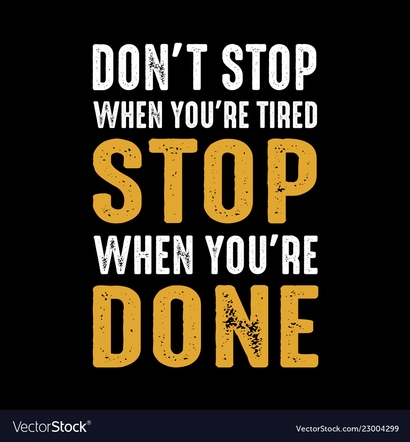
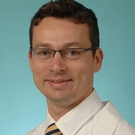
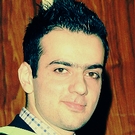



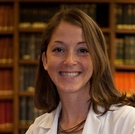


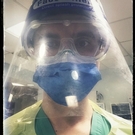
Please login to comment.